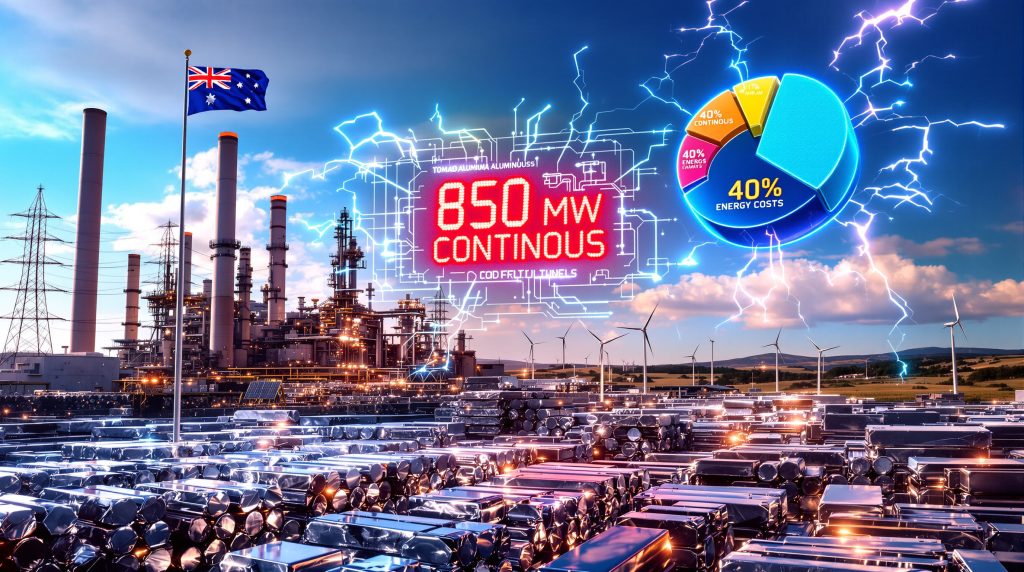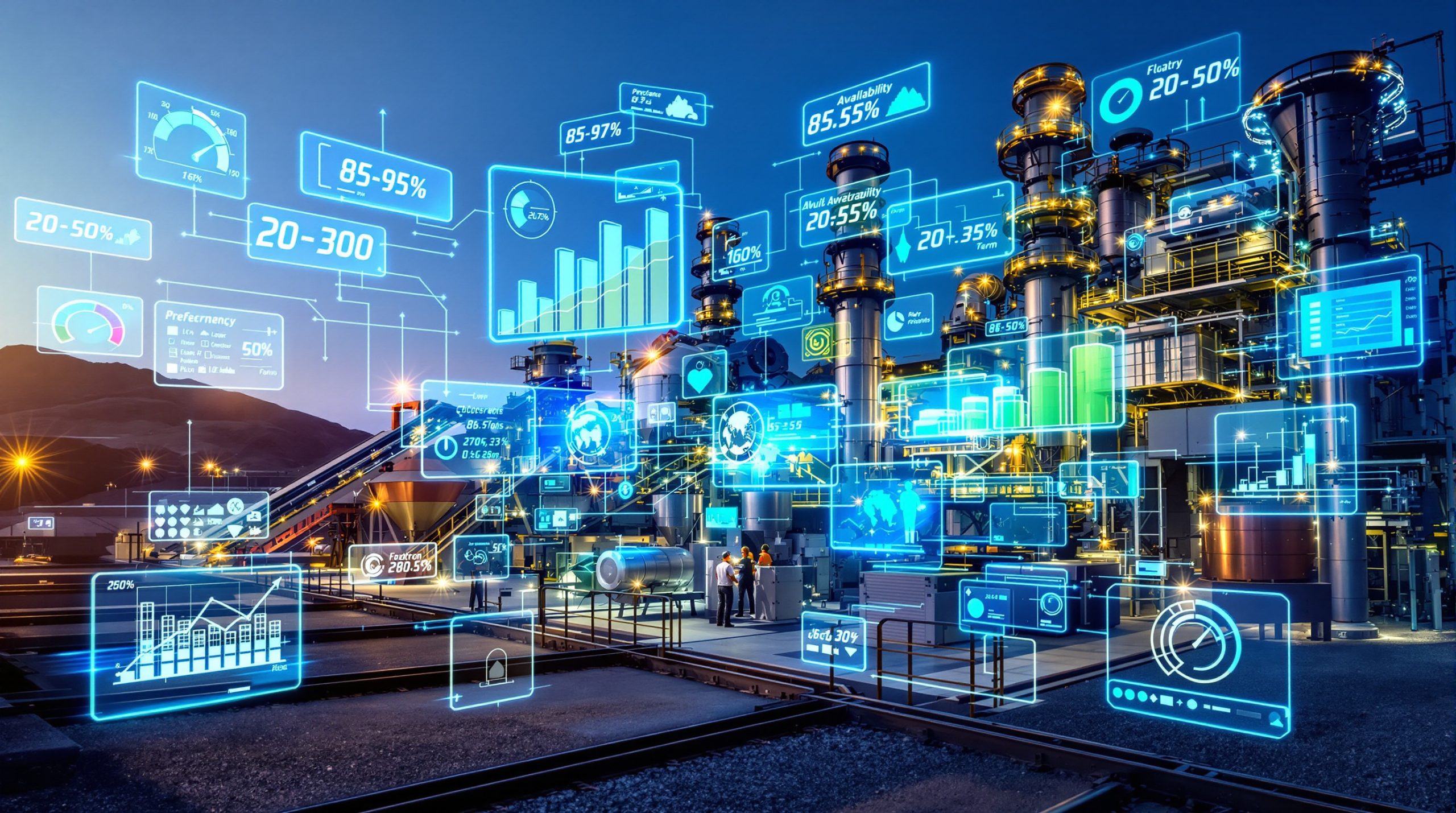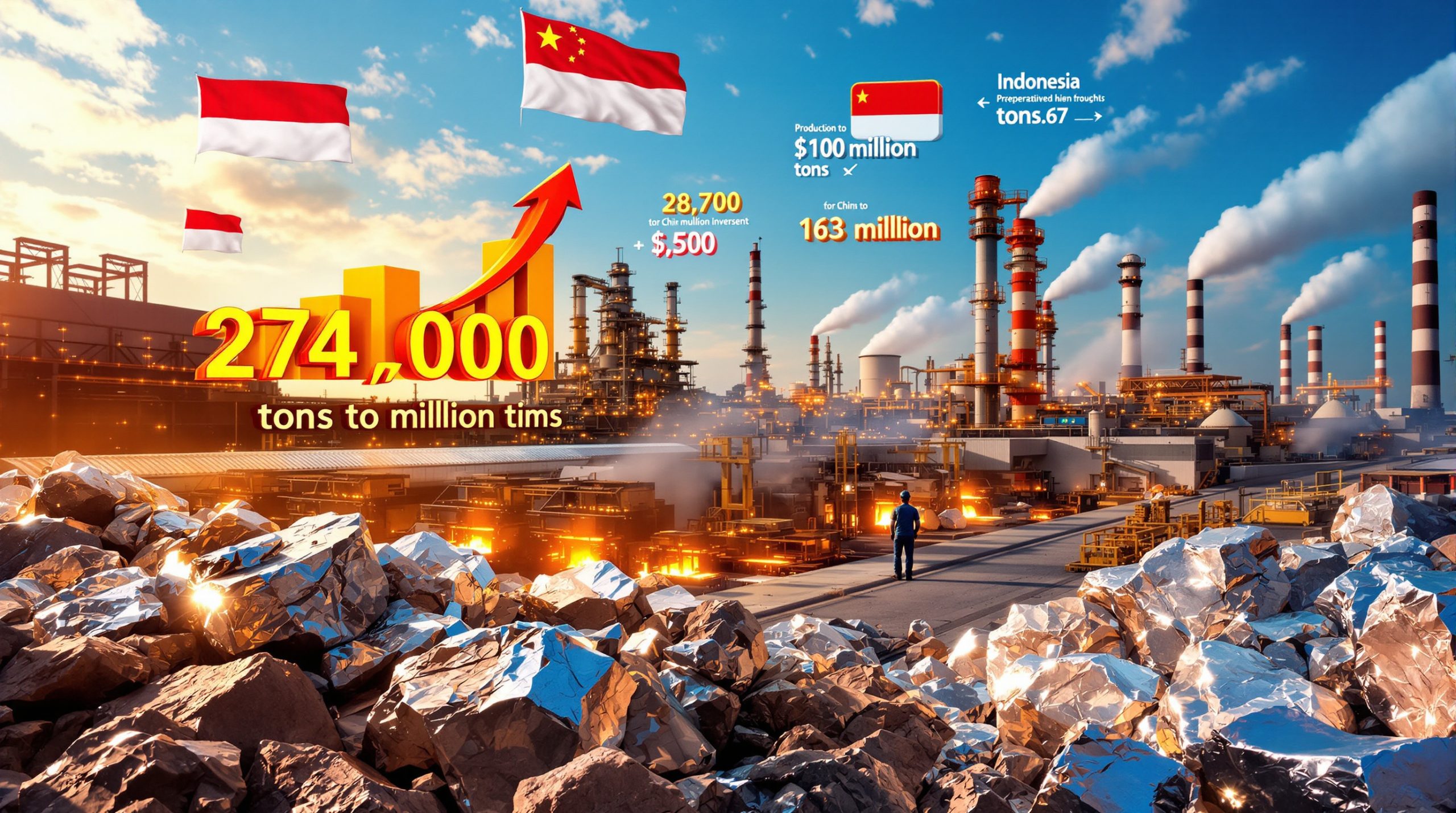What Makes Tomago Australia's Most Energy-Vulnerable Industrial Operation?
The Tomago aluminium smelter energy costs represent one of Australia's most pressing industrial challenges, as this massive facility operates with an insatiable appetite for electricity that dwarfs most other manufacturing operations across the country. This extraordinary energy dependency creates a unique vulnerability in the nation's industrial landscape.
Understanding the Scale of Energy Dependency
The sheer magnitude of Tomago's energy requirements places it in a category of its own among Australian industrial facilities. Operating 24 hours a day, seven days a week, the smelter maintains a continuous power demand that rivals entire metropolitan areas.
Key Energy Consumption Metrics:
• Annual electricity usage equivalent to supplying 600,000 Australian homes
• Continuous 850-megawatt baseload power requirement
• Represents approximately 12% of New South Wales' total electricity demand
• Consumes more energy annually than the entire Australian Capital Territory
This extraordinary energy dependency stems from the fundamental nature of aluminium production, which requires massive amounts of electricity to extract aluminium from alumina through the electrolysis process. The continuous operation cannot be easily interrupted without causing significant equipment damage and production losses.
The Economics Behind Energy-Intensive Aluminum Production
Energy costs represent the single largest operational expense for the Tomago facility, fundamentally shaping its economic viability. Understanding this cost structure reveals why Tomago aluminium smelter energy costs pose such an existential threat to operations.
Operational Cost Breakdown:
| Cost Category | Percentage of Total Costs | Annual Impact |
|---|---|---|
| Electricity | 40-45% | $400-500 million |
| Raw Materials (Alumina) | 25-30% | $250-350 million |
| Labor | 8-12% | $80-120 million |
| Other Operating Costs | 15-20% | $150-200 million |
The predominance of electricity costs in aluminium smelting creates a direct correlation between energy market volatility and operational profitability. When electricity prices increase by even modest percentages, the financial impact cascades through the entire operation.
Modern aluminium smelting technology has reached near-maximum efficiency levels, leaving limited opportunities for dramatic energy consumption reductions through technological improvements alone. This reality makes the facility particularly susceptible to external energy transition challenges affecting the broader market.
How Do Rising Energy Costs Threaten Australia's Largest Aluminum Producer?
The convergence of multiple energy market pressures has created an unprecedented challenge for the Tomago facility, threatening the viability of Australia's largest aluminium production operation.
Current Energy Market Pressures
New South Wales electricity markets have experienced significant volatility since 2020, driven by the retirement of coal-fired power stations and the transition toward renewable energy sources. These structural changes have created both opportunities and challenges for large industrial users.
Recent Market Developments:
• Wholesale electricity prices increased by over 60% between 2020 and 2025
• Peak demand periods now command premium pricing structures
• Grid stability concerns affecting long-term contract availability
• Renewable energy intermittency requiring backup power solutions
The closure of the Liddell power station in 2023 removed significant baseload capacity from the NSW grid, contributing to price volatility and supply security concerns. For continuous industrial operations like aluminium smelting, this creates additional operational risks beyond pure cost considerations.
Long-term power purchase agreements, traditionally used by energy-intensive industries to secure predictable electricity costs, have become increasingly expensive and difficult to negotiate. Energy retailers are reluctant to offer the multi-decade contracts that aluminium smelters typically require due to market uncertainties.
The Three-Year Closure Timeline Explained
The potential three-year closure timeline reflects the complex interplay of contractual obligations, operational realities, and financial thresholds that govern large industrial operations. According to Rio Tinto's official statement, the company has begun employee consultations regarding future operations due to ongoing viability concerns.
Critical Timeline Factors:
• Existing power purchase agreements with defined expiration dates
• Equipment maintenance cycles requiring substantial capital investment
• Workforce transition planning and severance obligations
• Environmental remediation requirements for permanent closure
International precedents demonstrate that aluminium smelter closures often follow predictable patterns. The Kurri Kurri smelter closure in 2012 and the Point Henry smelter shutdown in 2014 both occurred after extended periods of energy cost pressures and declining global competitiveness.
Industry Analysis: Energy cost increases beyond 20-25% of baseline levels typically trigger closure considerations for aluminium smelters operating in competitive global markets, as profit margins cannot absorb sustained price elevations.
What Economic Impact Would Tomago's Closure Have on Australia?
The potential closure of the Tomago aluminium smelter would create ripple effects throughout the Australian economy, affecting everything from local employment to national trade balances.
Regional Economic Consequences
The Hunter Valley region has developed significant economic dependencies around the Tomago operation, creating vulnerabilities that extend far beyond the facility's immediate workforce. Furthermore, recent government discussions highlight the severity of the situation.
Direct Regional Impacts:
• Over 1,000 direct jobs at risk across operational and management roles
• Estimated 3,000-4,000 indirect jobs in supporting industries
• Annual regional economic contribution exceeding $2.2 billion
• Significant reduction in local government revenue streams
The specialised nature of aluminium smelting means that many affected workers possess skills that may not easily transfer to other local industries. Retraining programs and workforce transition support would become critical considerations for managing social and economic disruption.
Local businesses serving the facility and its workforce would face immediate demand reductions, potentially triggering secondary business closures and further unemployment. The multiplier effect of such closures often exceeds initial estimates, particularly in regional economies with limited industrial diversity.
National Aluminum Supply Chain Implications
Tomago's closure would fundamentally alter Australia's position in global aluminium markets and create new supply chain vulnerabilities for domestic manufacturers.
National Production Impact:
| Metric | Current Status | Post-Closure Scenario |
|---|---|---|
| Annual Production | 590,000 tonnes | 0 tonnes |
| National Market Share | 40% of total production | Complete loss |
| Export Capacity | 450,000 tonnes annually | Import dependency |
| Downstream Supply | 15 major manufacturers | Supply disruption risk |
Australia's remaining aluminium production capacity would become concentrated in fewer facilities, potentially creating supply security concerns for strategic industries including defence, aerospace, and construction sectors.
The loss of domestic production capacity would necessitate increased imports, affecting Australia's trade balance and exposing downstream manufacturers to international price volatility and supply chain disruptions.
How Does Tomago's Energy Challenge Compare Globally?
International aluminium production demonstrates stark differences in energy strategies and cost structures, highlighting both challenges and potential solutions for Australian operations.
International Aluminum Smelter Energy Strategies
Global aluminium production has migrated toward regions with abundant, low-cost energy resources, creating competitive disadvantages for facilities operating in high-cost energy markets.
Global Production Cost Comparison:
• Norwegian Operations: Hydroelectric power at $0.02-0.03 per kWh
• Chinese Facilities: Coal-based generation at $0.04-0.06 per kWh
• Middle Eastern Smelters: Natural gas generation at $0.03-0.05 per kWh
• Australian Operations: Grid electricity at $0.08-0.12 per kWh
Norway's aluminium industry benefits from abundant hydroelectric resources, providing both low-cost and renewable energy that supports premium pricing for "green" aluminium products. This competitive advantage has allowed Norwegian smelters to maintain profitability while many other international facilities have closed.
Chinese aluminium production, despite relying heavily on coal-fired generation, maintains cost advantages through integrated supply chains and government policy support. However, increasing environmental regulations and carbon pricing mechanisms may erode these advantages over time.
Renewable Energy Transition Opportunities
The global transition toward renewable energy presents both challenges and opportunities for energy-intensive industrial operations like aluminium smelting. In addition, exploring decarbonisation benefits could provide new pathways for sustainable operations.
Renewable Integration Possibilities:
• Large-scale solar installations with battery storage systems
• Wind farm partnerships providing long-term price certainty
• Demand response participation during peak renewable generation
• Green hydrogen co-production during excess renewable capacity periods
Several international projects demonstrate successful integration of renewable energy with aluminium production. Iceland's Alcoa facility operates entirely on renewable energy, while Norway's operations leverage abundant hydroelectric resources to produce premium "green" aluminium commanding price premiums in environmentally conscious markets.
What Solutions Could Save Australia's Aluminum Industry?
Multiple intervention strategies could potentially address the energy cost challenges facing Tomago and preserve Australia's aluminium production capacity.
Power Purchase Agreement Innovations
Innovative contracting arrangements could provide the long-term price certainty required for sustainable aluminium production while managing risks for energy suppliers.
Potential Contract Structures:
• Indexed Pricing Models: Electricity costs linked to aluminium commodity prices
• Government Backstops: Public sector guarantee mechanisms for long-term contracts
• Renewable Energy Certificates: Integration with clean energy incentive programs
• Load Following Agreements: Flexible consumption patterns matching renewable generation profiles
Risk-sharing mechanisms between electricity generators and industrial consumers could address the reluctance of energy companies to offer long-term contracts in volatile markets. Government involvement might be necessary to facilitate these arrangements and provide confidence for multi-decade commitments.
Industrial Energy Efficiency Improvements
While aluminium smelting technology has reached high efficiency levels, targeted improvements could still yield meaningful cost reductions and operational benefits. Moreover, industry evolution trends suggest new technologies may offer additional opportunities.
Efficiency Enhancement Opportunities:
• Advanced Process Control: AI-driven optimisation of electrolysis cells
• Waste Heat Recovery: Utilisation of process heat for co-generation
• Equipment Modernisation: Replacement of older, less efficient systems
• Power Factor Optimisation: Improved electrical system efficiency
Modern smelting technology can achieve energy consumption levels 10-15% lower than older facilities, potentially offsetting some energy cost increases through reduced consumption per tonne of aluminium produced.
Policy Interventions and Industry Support
Government intervention could provide crucial support for maintaining strategic industrial capacity while facilitating the transition to sustainable energy sources.
Policy Support Mechanisms:
• Strategic Industry Designation: Recognition of aluminium production as critical infrastructure
• Energy Transition Assistance: Funding support for renewable energy integration
• Carbon Border Adjustments: Protection against unfair international competition
• Regional Development Incentives: Support for workforce transition and community development
International precedents demonstrate that government support can be crucial for maintaining strategic industrial capacity during energy market transitions. Countries including Norway, Canada, and Iceland have successfully preserved aluminium production through targeted policy interventions.
Could Renewable Energy Revitalize Australian Aluminum Production?
The transition to renewable energy sources presents opportunities for Australian aluminium production to regain competitiveness while meeting growing demand for sustainable materials.
Green Aluminum Market Opportunities
Environmental consciousness among consumers and manufacturers is creating premium markets for sustainably produced aluminium, potentially offsetting higher production costs with improved pricing.
Sustainable Production Benefits:
• Price Premiums: Green aluminium commanding 5-15% higher prices
• Market Access: Meeting sustainability requirements for major customers
• Export Advantages: Differentiation in competitive international markets
• Carbon Credit Revenue: Potential income from emission reduction certificates
Major automotive and construction companies are increasingly specifying low-carbon aluminium in their supply chains, creating market opportunities for producers who can demonstrate sustainable production methods.
Technology Integration Pathways
Advanced energy management technologies could enable Australian aluminium production to leverage the country's abundant renewable energy resources effectively. For instance, hydrogen-powered trucks demonstrate how hydrogen technology could integrate with industrial operations.
Integration Technologies:
• Smart Grid Connectivity: Dynamic load management based on renewable availability
• Large-Scale Storage: Battery systems enabling load shifting during peak pricing
• Flexible Operations: Production scheduling aligned with renewable generation patterns
• Hydrogen Production: Utilising excess renewable capacity for value-added production
Australia's exceptional solar and wind resources could potentially support some of the world's most cost-effective renewable energy systems, creating long-term competitive advantages for energy-intensive industries willing to invest in transformation.
What Does Tomago's Future Mean for Australian Manufacturing?
The outcome of Tomago's energy challenges will likely influence policy decisions and investment strategies affecting the broader Australian manufacturing sector.
Broader Manufacturing Sector Implications
Energy policy decisions related to Tomago aluminium smelter energy costs will establish precedents for how Australia manages the transition of energy-intensive industries toward sustainable operation models.
Sector-Wide Considerations:
• Steel Production: Similar energy challenges facing BlueScope and other producers
• Chemical Manufacturing: Energy-intensive processes requiring long-term certainty
• Food Processing: Regional manufacturers dependent on competitive energy costs
• Mining Operations: Extraction and processing facilities with high energy demands
The precedent established by policy responses to Tomago's situation will influence investment decisions across multiple industries, potentially affecting Australia's long-term manufacturing competitiveness and strategic industrial capacity.
Investment and Innovation Opportunities
Transformation of the Tomago site, whether through operational changes or alternative uses, could demonstrate pathways for industrial evolution in response to energy market changes. Consequently, events like the global resources expo showcase innovative solutions for industrial transformation.
Development Possibilities:
• Advanced Manufacturing: High-value, technology-intensive production facilities
• Research and Development: Collaboration with universities on materials science
• Clean Energy Hub: Large-scale renewable generation and storage projects
• Hydrogen Production: Leveraging existing infrastructure for emerging energy technologies
The specialised infrastructure and skilled workforce associated with Tomago represent valuable assets that could support new industrial activities aligned with Australia's evolving economic priorities.
Frequently Asked Questions About Tomago's Energy Crisis
Why Is Aluminum Production So Energy-Intensive?
Aluminium production requires enormous amounts of electricity due to the fundamental chemistry of extracting aluminium metal from alumina ore through electrolysis.
Energy Requirements Explained:
• Electrolysis Process: Breaking chemical bonds requires substantial electrical input
• High Temperature Operations: Maintaining molten metal at over 950°C continuously
• Chemical Reduction: Converting aluminium oxide to pure metal through electrical energy
• Continuous Operation: 24/7 processes that cannot be easily interrupted or scaled down
The laws of physics dictate minimum energy requirements for aluminium production, with theoretical limits only slightly below current best-practice consumption levels. This reality makes Tomago aluminium smelter energy costs management crucial for operational viability.
What Alternatives Exist for Australian Aluminum Supply?
Australia's domestic aluminium requirements could be met through various alternative supply arrangements, though each option involves trade-offs in cost, reliability, and strategic considerations.
Supply Alternatives:
• Increased Imports: Primary aluminium from international producers
• Recycling Expansion: Enhanced collection and processing of aluminium scrap
• Strategic Reserves: Government stockpiles for critical supply security
• Regional Production: Sourcing from remaining Australian smelters
Import dependency would expose Australian manufacturers to international price volatility and potential supply disruptions during global crises. Historical precedents demonstrate that strategic materials can become unavailable during international conflicts or trade disputes.
How Quickly Could Operations Resume if Conditions Improve?
Restarting aluminium smelter operations after closure involves significant technical challenges and substantial capital investment, making permanent closure decisions particularly consequential.
Restart Considerations:
• Equipment Preservation: Maintaining critical systems during shutdown periods
• Workforce Retention: Keeping skilled personnel available for operations
• Capital Investment: Funding required for equipment refurbishment and upgrades
• Market Conditions: Ensuring sustainable operating environment before restart
International experience suggests that smelter restarts can take 12-24 months and require substantial investment, assuming equipment has been properly maintained during closure periods. Without proper preservation, restart costs can approach new facility construction expenses.
Disclaimer: This analysis is based on publicly available information and industry trends. Energy market conditions, government policies, and economic factors affecting industrial operations can change rapidly. Readers should consult current sources and professional advisors for investment or business decisions related to the aluminium industry or energy markets.
Looking to Capitalise on Australia's Changing Industrial Landscape?
Discovery Alert's proprietary Discovery IQ model instantly identifies significant ASX mineral discoveries that could reshape Australia's resource sector, particularly as traditional industries face unprecedented challenges. Start your 30-day free trial today and position yourself ahead of the market as Australia's industrial transformation creates new investment opportunities.




